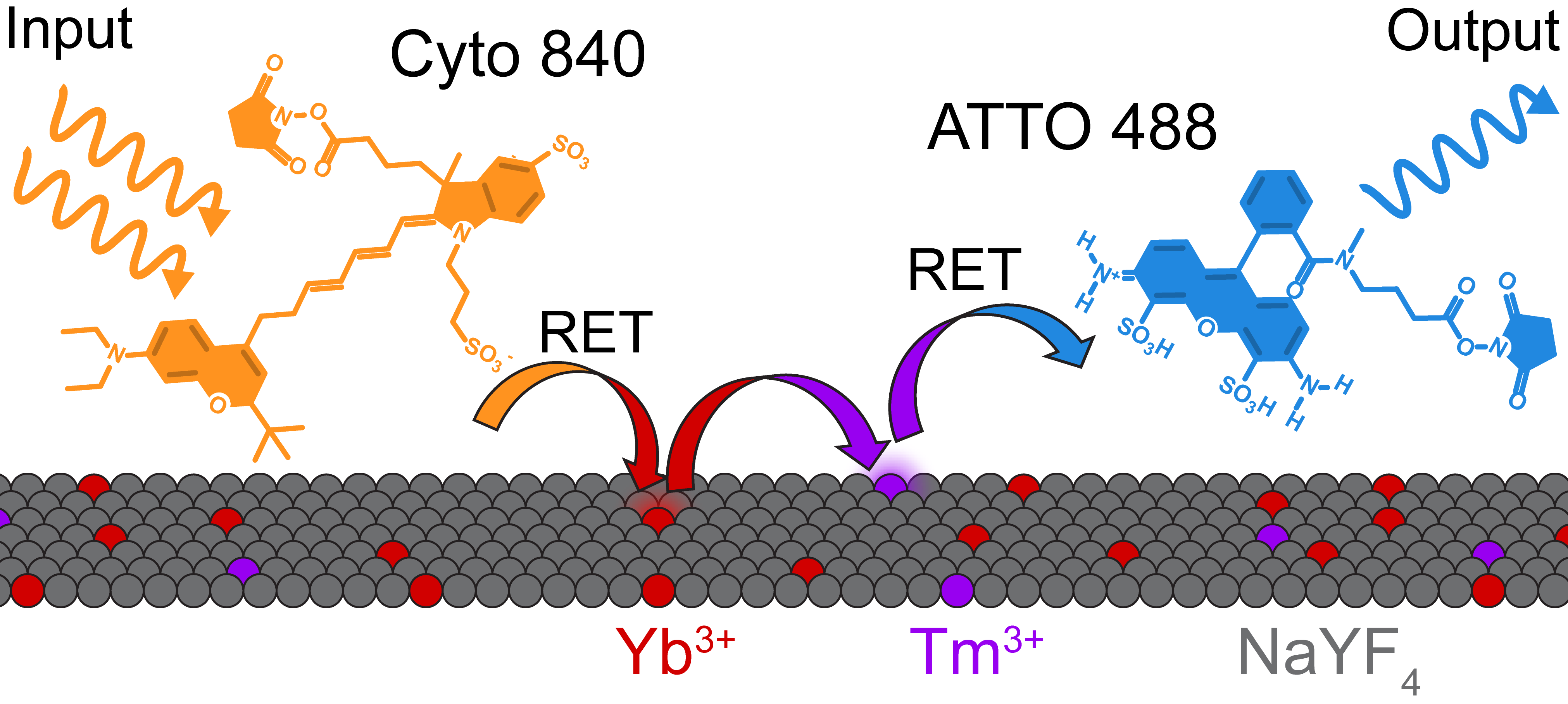Craig LaBoda, PhD
Projects
Upconverting Nanoparticle Based RET Relays
One of the current hurdles preventing the scaling of RET logic is the intrinsic energy loss of the fluorescent molecules composing these circuits. As excitons move through a RET network they lose energy due to the vibrational relaxation of each fluorophore. This loss prevents independently designed RET networks from being cascaded or using feedback since the output of one network is typically too low in energy to act as the input to a subsequent network.

In an attempt to overcome this issue, I have developed the upconverting nanoparticle (UCNP) based RET relay to restore the energy of excitons as they transition from one RET network to the next. UCNPs typically take in multiple near-infrared (NIR) photons and emit visible light using a set of lanthanide dopants (usually Yb, Er, or Tm) embedded in a NaYF4 nanocrystal. The RET relay, composed of NIR and visible fluorophores adsorbed to the surface of a UCNP, leverages this dual-dopant upconversion system to convert multiple low energy excitons into a single high energy exciton. As shown in the figure above, operation of the device proceeds by first exciting the NIR fluorophore (Cyto 840). This generates low energy excitons (representing the output of upstream RET networks) that are transferred to the dopants of the UCNP via RET. After multiple transfer events, the dopants reach a highly excited state from which they can transfer a single, high energy exciton to the adsorbed visible fluorophore (ATTO 488). With further optimization, this proof-of-concept device will enable the cascading of independent RET networks by acting as an energy-restoring buffer.
Publications:
LaBoda, C. and Dwyer, C. L. (2016). Upconverting Nanoparticle Relays for Resonance Energy Transfer Networks. Advanced Functional Materials. 26:2866-2874.